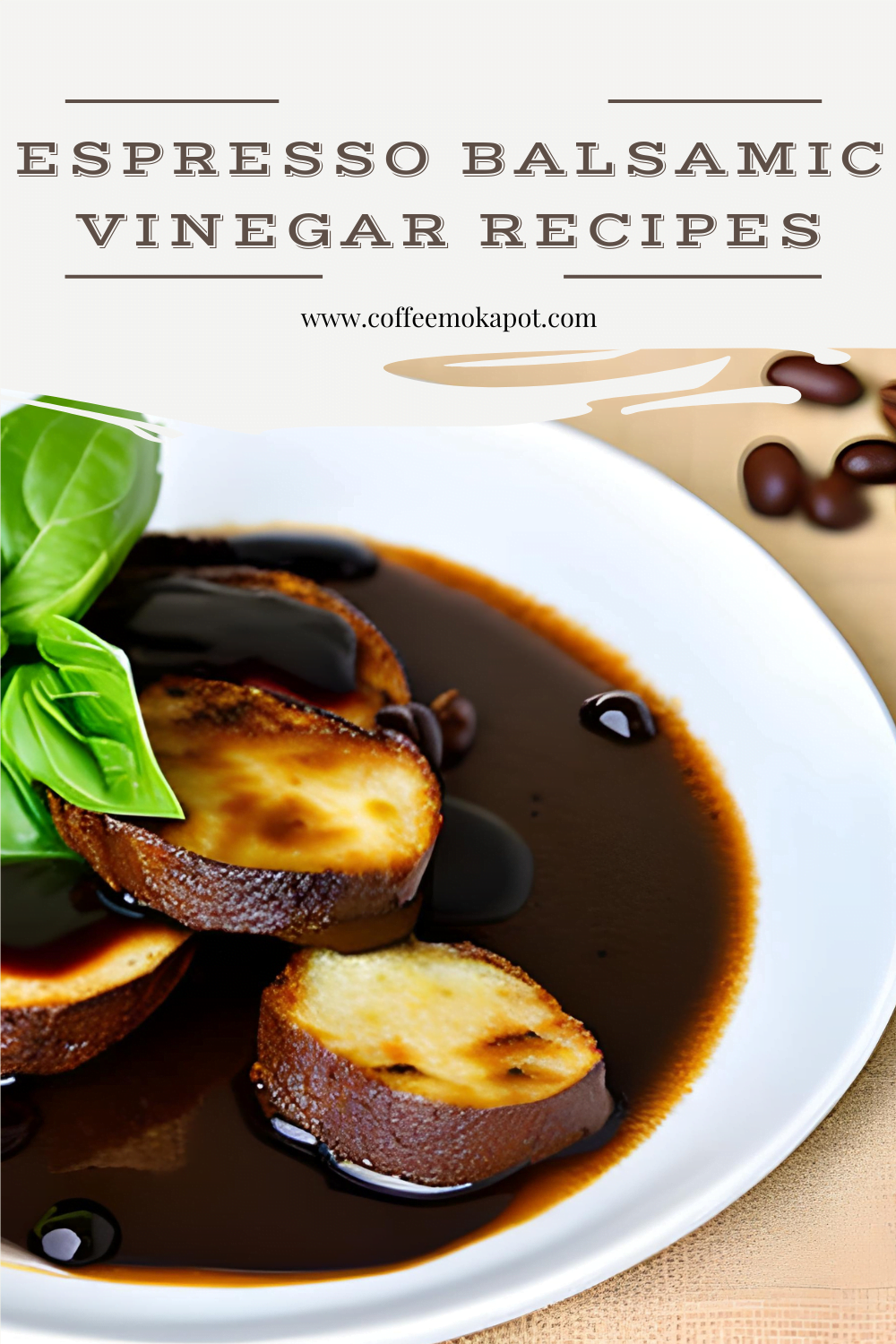Espresso balsamic vinegar is a delectable ingredient that can add depth and complexity to any dish. It is a unique blend of dark, rich espresso and tangy, syrupy balsamic vinegar. The combination of these two flavors creates a taste sensation that is both sweet and savory. Espresso balsamic vinegar is a versatile ingredient that can be used in a variety of recipes, from salads and marinades to glazes and desserts.
If you’re looking to add some depth and complexity to your cooking, then you should definitely try incorporating espresso balsamic vinegar into your recipes. Whether you’re a novice cook or a seasoned chef, you’ll find that this ingredient is incredibly easy to work with and can add a delicious new dimension to your dishes.
Some of the best espresso balsamic vinegar recipes include using it as a marinade for steak or chicken, drizzling it over a fresh salad with roasted vegetables, or even using it as a glaze for roasted carrots or sweet potatoes. Additionally, espresso balsamic vinegar can be used in dessert recipes, such as drizzling it over vanilla ice cream or using it to make a decadent chocolate sauce.
Overall, espresso balsamic vinegar is a must-try ingredient for anyone who loves experimenting with new flavors and ingredients in their cooking. So why not give it a try and see how it can transform your next meal?
The Art of Infusing Espresso Balsamic Vinegar
One of the unique aspects of espresso balsamic vinegar is its ability to be infused with other flavors. To infuse the vinegar, simply add your desired flavor to a jar with the vinegar and let it sit for a few days. Some popular flavor combinations include garlic, rosemary, or even strawberries. The longer the vinegar infuses, the stronger the flavor will be. Infused espresso balsamic vinegar can be used in dressings, marinades, and even cocktails. Try experimenting with different flavor combinations to create your own signature infused espresso balsamic vinegar.

espresso balsamic vinegar recipes
Equipment
- 1 skillet
- 1 Measuring cup
- 1 whisk
Ingredients
- 1/4 cup espresso balsamic vinegar
- 1 tablespoon olive oil
- 1 teaspoon honey
- 1/4 teaspoon salt
- 4 pieces boneless, skinless chicken breasts.
Instructions
- Heat the olive oil in a skillet over medium-high heat.
- Add the chicken breasts to the skillet and cook for 6-7 minutes on each side, or until they are fully cooked.
- Remove the chicken from the skillet and set aside.
- In the same skillet, whisk together the espresso balsamic vinegar, honey, and salt over medium heat.
- Continue whisking until the mixture thickens and reduces by half, approximately 5-7 minutes.
- Return the chicken to the skillet and coat it with the espresso balsamic reduction.
- Serve and enjoy!
Notes
Selecting the Perfect Coffee Blend for Espresso Balsamic Vinegar
Choosing the right coffee blend to use in your espresso balsamic vinegar recipe can greatly enhance the flavor profile of the dish. A bold, dark roast coffee will complement the richness of the balsamic vinegar, while a medium roast coffee can add a subtle sweetness. When selecting a coffee blend, look for notes of chocolate or caramel, as these flavors will complement the espresso balsamic vinegar. Consider using a single-origin coffee for a more distinct flavor profile. Experiment with different coffee blends to find the perfect pairing for your espresso balsamic vine gar recipe.
FAQ
Espresso balsamic vinegar pairs well with a variety of dishes, including grilled meats, roasted vegetables, salads, and pasta dishes.
While you can use regular balsamic vinegar in place of espresso balsamic vinegar, the flavor profile will be different. Espresso balsamic vinegar has a bold, rich flavor that is specifically designed to complement the taste of espresso.
You can find espresso balsamic vinegar at gourmet food stores, specialty markets, and online retailers.
When stored in a cool, dry place, unopened bottles of espresso balsamic vinegar can last for up to 2 years. Once opened, the vinegar should be used within 6 months.
Yes, espresso balsamic vinegar can be used to add a unique flavor to desserts such as chocolate cake, brownies, and ice cream.






